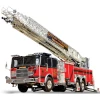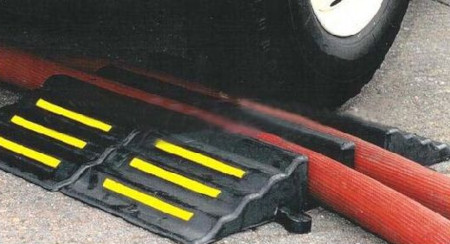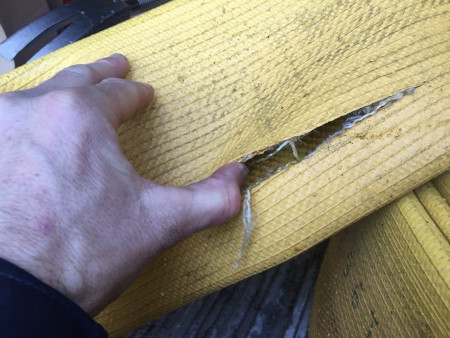 When there is a fire, we need fire trucks to get there as quickly as possible. Literally, seconds count. Once on scene, a safe working area, free of other traffic, is required so that firefighters can concentrate on the task. Our Motor Vehicle Act provides for both situations.
When there is a fire, we need fire trucks to get there as quickly as possible. Literally, seconds count. Once on scene, a safe working area, free of other traffic, is required so that firefighters can concentrate on the task. Our Motor Vehicle Act provides for both situations.
Make Way for Fire Trucks
Fire trucks responding to an emergency is granted right of way and exemptions from following traffic rules in the same manner as police vehicles and ambulances.
Keep Back 150 Metres
Fire trucks have a special privilege granted to no other emergency vehicle in British Columbia. You must not follow them within 150 meters or 500 feet unless you are also driving an emergency vehicle. Having never been a firefighter I was curious and thought that I would ask the experts and find out why this rule exists.
Large Fire Vehicles are not Nimble
Fire trucks is not always as nimble as the vehicles most people drive so they may not be able to easily pull away from traffic. Following at the proper distance leaves room for sudden stops, turns and unexpected lane changes. Following too closely could cause a collision that would prevent the fire truck from reaching the emergency and have significant consequences in both locations.
Don't Get Trapped in the Situation
As a follower, you don't know what sort of emergency the fire truck is responding to. It may be a situation that you don't want to become involved in such as an explosion or building collapse. Proper following distance will keep you from becoming trapped in the situation.
Fire Hydrant Location
Finally, hydrants are usually located at street corners in the city. Keeping back allows firefighters to lay hose in safety.
Don't Go There
That same 150 metre following distance applies to driving or parking in the vicinity of a fire scene. Unless directed to do so by an official with that authority you cannot go there. It is up to you to recognize this and find another way around that does not involve driving through the scene or over a fire hose.
Don't Drive Over Fire Hoses
Imagine that you are a firefighter, hose in hand, approaching the flames inside a burning building. You open the nozzle on your attack line and...nothing. Someone has driven over the hose outside in the street and ruptured it causing a loss of pressure. Not only are you unable to fight the fire, you cannot protect yourself.
This is why it is an offence drive over an unprotected fire hose without the permission of the fire department official in command. Even if the hose is protected, it is likely to be within the 150 metre exclusion zone and you would not be able to use it without authorization.

Here's an example of a supply line that was in use by the Vancouver Fire Department at a fire. It was driven over by two vehicles and sustained the damage shown:

Share This Article
As a traffic control person, when I close a road I place advanced warning signs for all affected traffic to observe as they approach the closure. I place detour signs around the closure and add things like no left/right turn signs and such, to reiterate the closure. I also cone of turn lanes that lead to the closure, just so traffic isn't stuck in a turn lane to a road that is closed. All of this set up can take an hour or more and involves pre-planning and a traffic management plan.
When Police or Fire/Rescue responds to a call where they need to close the road, they will park across the lanes of traffic with lights activated. It is up to you, the licensed driver who is required to drive responsibly and with due care and attention, to recognize this and to detour your trip and find another way around. It doesn't mean drive into oncoming lanes of traffic to get around the emergency vehicle, it doesn't mean park in the middle of an intersection and stare are the emergency vehicle, creating a traffic jam and increasing the danger for everyone.
Shoulder check, change lanes, find another path or pull forward and out of the way, then check your phone. Don't stop in the middle of the road and act confused, don't make it harder for people behind you to see what is going on. You are blocking their view of the emergency vehicle with creates a dangerous situation where they may aggressively go around you, upset at your unpredictable driving, only to find out they are now headed right for the emergency vehicle that you were blocking his view of.
Recognize what you see ahead of you.
React with caution and diligence, get out of the path of others safely.
Stay off your phone when you are driving.
Constantly scan the horizon looking for dangers or hazards that might cause you to stop unexpectedly.
If you see first responders, children or essentially anyone on a road, slow down and move over - in that order. Selfish drivers tend to forget about slowing down when they see action ahead of them, creating a dangerous environment for everyone involved.
- Log in to post comments
- Log in to post comments

Informal road closure